The "Jewels" Who Started it All
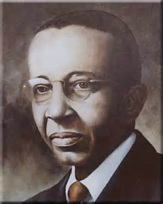
Jewel Brother Henry Arthur Callis is a true Alpha man; always being driven to achieve his goals. Jewel Brother Henry Arthur Callis was the son of an AME Zion preacher born in 1887 in Rochester, NY. At the age of six, after visiting with his aunt and brother, he pledged that he would pursue an education at Cornell University. Jewel Brother Callis realized his dream after winning a state scholarship to attend Cornell from his alma mater of Central High School in Binghamton, NY. While at Cornell, he made extra money through tutoring white students and being a waiter in the dining rooms of the established white fraternities. In the fall of 1905, Jewel Brother Callis left Cornell, returning in the fall of 1906, the term Alpha Phi Alpha was founded. As a founder, he was very involved in the Fraternity; serving as President, Vice-President, and Secretary during his college days. He also served as the seventh General President from 1915-1916, and General Vice-President in 1909. Jewel Brother Callis is often regarded as the “Philosopher of the Founders.” Jewel Brother Callis earned a Bachelor of Arts degree from Cornell in 1909. After college he entered the field of medicine and was stationed as a physician at the government hospital in Tuskegee, Alabama. Jewel Brother Callis had been the last living jewel for sometime and was finally laid to rest in 1974 at the age of 87. His papers were donated to Howard University’s Moorland-Spingarn Research Center.
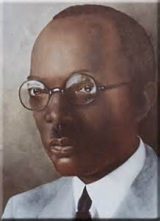
Jewel Brother Charles Henry Chapman was a much older undergraduate student than the other founders upon entering Cornell University to study agriculture. Jewel Brother Chapman attended Cornell University from 1900-1901, and from 1902-1906. At this point, he had already been in Ithaca long enough to set up a small café that employed a number of people. This innovative spirit made him known for his financial solvency and a driving force in the founding of the Fraternity. He was the first chairman of the Committees on Initiation and Organization, and organized Odd Fellows Hall as the location for the first initiatory banquet. After his undergraduate days at Cornell University, Chapman entered higher education and later became a Professor of Agriculture at Florida A&M University. Jewel Brother Chapman was the founder of Beta Nu Chapter at Florida A&M but became the first Jewel to enter Omega Chapter in 1934. Brother Chapman was considered a “Brother beloved in the bonds.”
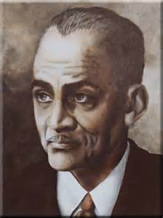
Jewel Brother Eugene Kinckle Jones, of Richmond, VA was the son of a Virginia Union University Professor and entered Cornell University in the fall of 1906. In February of 1907, Jewel Brother Jones transferred to the College of the Arts of Science at Cornell. Jewel Jones' love for Alpha Phi Alpha is apparent through his leadership during the early years. He assisted Jewel Brother Henry A. Callis in creating the fraternity name, Alpha Phi Alpha, and became the second president of Alpha Chapter in 1907. Jewel Brother Jones also assisted the development of the organization by being a member of the first Committee on Constitution and Organization along with assisting with the creation of the Fraternities’ original Ritual. Beyond recognition as one of the fraternity’s charter members, Jewel Brother Jones is responsible for organizing the first three chapters of the fraternity outside of the original Alpha Chapter. He followed his Cornell education by becoming the first Executive Secretary of the National Urban League. His twenty years in this position exceeds any tenure by any other executive thus far
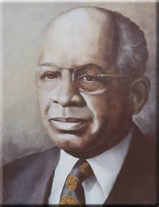
Jewel Brother George Biddle Kelley hails from Troy, NY and studied at Rensselaer Polytechnic Institute before entering the College of Engineering at Cornell University in 1905. While a member of the social studies club, Jewel Brother Kelley was the biggest proponent for the idea of establishing a Fraternity. He stayed true to this ideal of Fraternity and became the first president of Alpha chapter, the first chapter of the Fraternity. Furthermore, Jewel Brother Kelley served on Committees on the Grip and Ritual. Due to his substantial work within Alpha Phi Alpha, Jewel Brother Kelley was very popular amongst the Brotherhood. Jewel Brother Kelley attended Cornell from 1905-1908 and earned a degree in Civil Engineering. After graduating from Cornell University, he went on to become New York State’s first African American registered engineer. The Library of Congress holds a map of Birmingham, Alabama and its surrounding suburbs, that was drawn by Jewel Brother Kelley. He lived in Troy, New York and was an active member of Beta Pi Lambda Chapter in Albany, NY until he passed away in 1963.
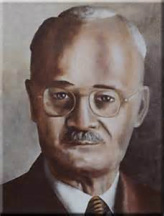
Jewel Brother Nathaniel Allison Murray was one of seven children; one of two whom attended Cornell University. Jewel Brother Murray’s father was the 1st African American employee of the Library of Congress. After completing undergraduate work at Howard University, he left Washington, D.C. and entered Cornell in the fall of 1905 as a student at the College of Agriculture. He contributed to the founding of Alpha Phi Alpha by being a member of the Committee on Organization and the Committee on the Grip. He was also one of the biggest advocates convincing the other members of the social studies club, which preceded the fraternity, to establish a fraternity for African American students. Jewel Brother Murray attended Cornell from 1905-1907, and from 1909-1911 and earned a Bachelor’s in Science in Agriculture. Jewel Brother Murray spent the rest of his career after Cornell teaching Agriculture and Biology at Armstrong Vocational High School in the District of Columbia. There, he chartered Washington. D.C.’s Mu Lambda Chapter.
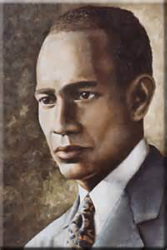
Jewel Brother Robert Harold Ogle was also from Washington, D.C. and is unique among the fraternity founders. Jewel Brother Ogle was married and had two daughters while being a student at Cornell University. His wife passed away, leaving him widowed during his senior year. Jewel Brother Ogle is credited for proposing the Fraternity's colors and, along with Jewel Brother George Biddle Kelley, creating the first ritual. Jewel Brother Ogle was a student at the M Street High School; a school considered one of the finest preparatory schools for African-Americans in the city of Washington, D.C. and went onto Cornell in the fall of 1905. He also served as Alpha chapter's first secretary and used that as a starting point into professionally pursuing the secretarial field. This prepared him for his future career path as a professional staff member of the United States Senate Committee on Appropriations. Jewel Brother Ogle passed away in 1936.
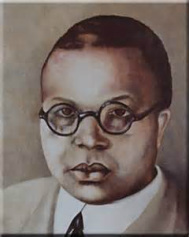
Jewel Brother Vertner Woodson Tandy was the son of a building contractor from Lexington, Kentucky. Jewel Brother Tandy is portrayed as the artist of the Fraternity. Aside from being the first treasurer of the Alpha chapter, he is responsible for the design of the Fraternity's pin and multiple banquet and program illustrations. Jewel Brother Tandy attended Cornell from 1905-1908 and professionally became an architect. In fact, Jewel Brother Tandy was the first registered African American architect in the State of New York and one of the first African Americans to become a member of the American Institute of Architects. His building designs include The Saint Phillips Episcopal Church in New York City and Madame C.J. Walker's mansion.